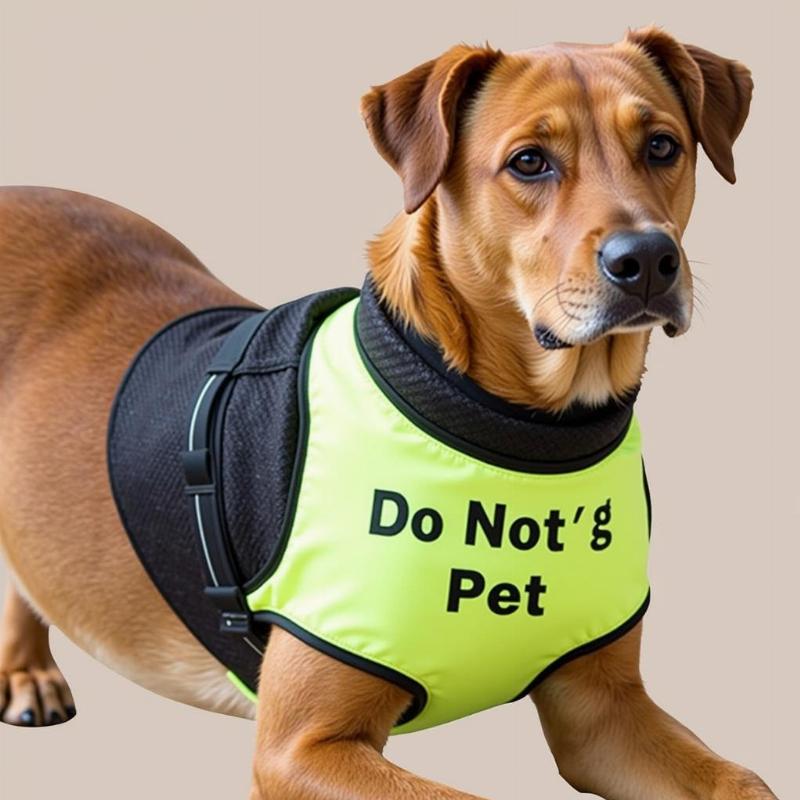The phrase “can I pet your dog hat?” has become a popular, albeit slightly humorous, way to inquire about petting someone’s dog, especially when the dog is small enough to resemble a furry accessory. But behind the playful tone lies a genuine question about dog interaction etiquette. This article explores the nuances of approaching and petting dogs, especially in the context of the “can I pet your dog hat” phenomenon, providing you with the knowledge and confidence to navigate these situations with grace and respect for both dog and owner.
Understanding the “Can I Pet Your Dog Hat?” Phenomenon
The “can I pet your dog hat” phrase emerged from the internet’s love of adorable small dogs, often carried or held in ways that make them resemble accessories. While lighthearted, it highlights the importance of always asking before interacting with a dog, regardless of size. This seemingly trivial question reflects a crucial aspect of responsible dog ownership and interaction: respecting boundaries. Just because a dog is small and being held doesn’t automatically grant permission to pet it.
Why Asking Permission is Crucial
Asking “can I pet your dog?” – or even the more playful “can I pet your dog hat?” – demonstrates respect for both the dog and the owner. Dogs, like people, have individual personalities and comfort levels. Some dogs are social butterflies, while others are more reserved or even fearful. Asking permission allows the owner to assess the situation and determine if their dog is receptive to interaction. It also avoids startling the dog, which could lead to a negative reaction. In the US, where dog ownership is widespread, understanding and respecting these boundaries is essential for creating a safe and positive environment for everyone.
How to Approach a Dog Respectfully
Approaching a dog correctly is just as important as asking permission. Avoid direct eye contact, which can be perceived as threatening. Instead, approach calmly and slightly to the side, allowing the dog to sniff your hand if they wish. Avoid reaching over the dog’s head, as this can be intimidating. Speak softly and avoid sudden movements. If the owner gives permission to pet, start with gentle strokes on the chest or back, avoiding the face and head initially. Observe the dog’s body language. A wagging tail isn’t always a sign of happiness; it can also indicate anxiety. Look for relaxed posture, soft eyes, and playful movements. If the dog seems uncomfortable or withdrawn, respect their space and back away.
Is Your Dog a “Pet Me” or “Don’t Pet Me” Dog?
 A dog wearing a vest that says "Do Not Pet".
A dog wearing a vest that says "Do Not Pet".
Some owners use visual cues, such as vests or bandanas, to communicate their dog’s preference for interaction. These are especially common for service dogs or dogs with anxiety or reactivity. Respect these signals and avoid approaching dogs wearing “Do Not Pet” gear. This helps create a safer environment for the dog and prevents potentially stressful encounters. Even if a dog isn’t wearing a vest, always observe their body language and respect their boundaries.
Conclusion
While “can I pet your dog hat?” might seem like a humorous question, it emphasizes the fundamental principle of respecting dog and owner boundaries. By always asking permission and approaching dogs thoughtfully, we can ensure positive interactions and contribute to a safer, more enjoyable environment for everyone. Remember, a little consideration goes a long way in building positive relationships with our furry friends.
FAQ
- Why is it important to ask before petting a dog? It respects the dog and owner’s boundaries, avoids startling the dog, and allows the owner to assess if their dog is comfortable with interaction.
- How should I approach a dog I want to pet? Approach calmly, slightly to the side, avoid direct eye contact, and let the dog sniff your hand before petting.
- What does a wagging tail mean? While often associated with happiness, a wagging tail can also indicate anxiety or other emotions. Observe the dog’s overall body language.
- What should I do if a dog is wearing a “Do Not Pet” vest? Respect the signal and avoid approaching the dog.
- What are some signs a dog is uncomfortable? Tucked tail, flattened ears, whale eye (showing the whites of their eyes), lip licking, yawning, and turning away are potential signs of discomfort.
Beautdogs.us is your premier online destination for comprehensive and engaging information on dog care and companionship in the USA. We offer expert advice on dog breeds, grooming, training, nutrition, and overall wellness. Whether you’re a seasoned dog owner or just starting your journey with a furry friend, Beautdogs.us provides trusted resources to help you navigate the joys and responsibilities of dog ownership. Contact us today for all your dog-related needs! Email: [email protected], Phone: +1 501-555-7529. Visit Beautdogs.us for more information!